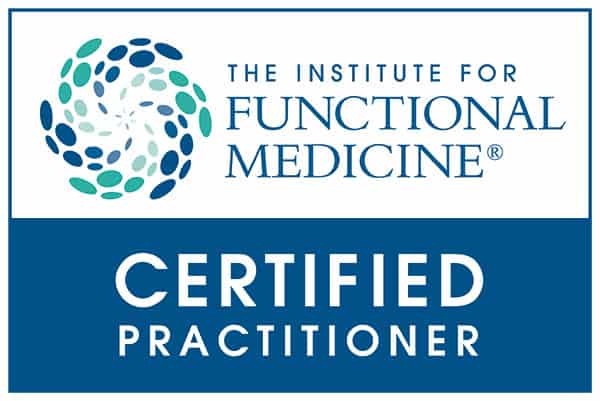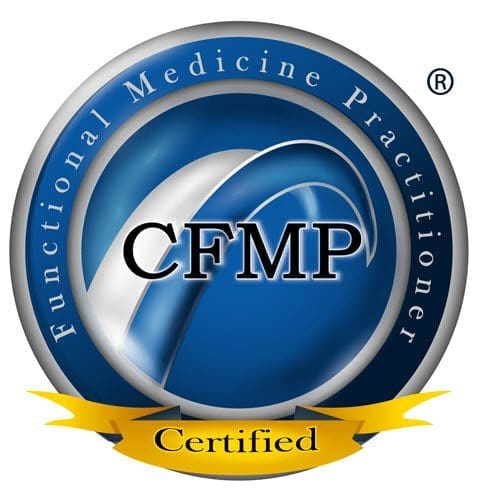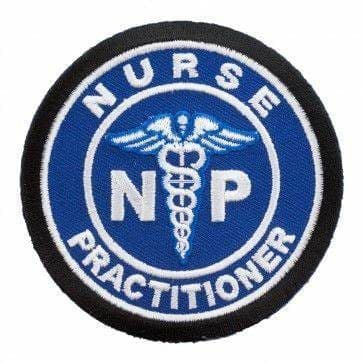Learn how PTSD can arise from severe whiplash sustained in auto accidents. Discover healing approaches and recovery insights.
Contents
Understanding PTSD Associated with Severe Whiplash from Motor Vehicle Accidents
Introduction
Picture this: you’re driving along, maybe singing to your favorite tune, when bam!—a car rear-ends you. Your head snaps back and forth like it’s auditioning for a bobblehead commercial. That’s whiplash, and it’s no laughing matter. Whiplash is a neck injury caused by rapid head movement, often in motor vehicle accidents (MVAs), and it can lead to serious pain and long-term issues. But here’s the kicker: it’s not just your neck that might suffer. The trauma of the crash can also mess with your mind, potentially leading to Post-Traumatic Stress Disorder (PTSD).
PTSD is a mental health condition that can develop after a terrifying event, like a severe car accident. It brings symptoms like flashbacks, nightmares, and constant anxiety that make you feel like you’re reliving the crash. When whiplash is severe, the physical pain can team up with the emotional trauma, making recovery a tough road. This blog post dives into why severe whiplash and PTSD often go hand-in-hand, using research and insights from experts like Dr. Alexander Jimenez, a top chiropractor and nurse practitioner in El Paso, Texas. We’ll also explore why personal injury cases are important in El Paso and how Dr. Jimenez assists victims with advanced medical care and legal support. Buckle up (safely, of course) for a journey through the science, symptoms, and solutions for these conditions.
The Mechanism of Whiplash in Motor Vehicle Accidents
Whiplash is like your neck getting an unwanted rollercoaster ride. It happens when your head is suddenly forced forward and backward, or side to side, stretching the muscles, ligaments, and tendons in your neck beyond their normal range. In a typical rear-end collision, the car’s impact pushes your body forward, while your head lags, causing your neck to hyperextend. Then, as your body stops, your head whips forward, hyperflexing the neck. This rapid motion can damage the cervical spine (the upper part of the spine) and the surrounding soft tissues.
The forces involved are no joke. Even a low-speed crash at 7-8 mph can make your head move 18 inches at 7 G (that’s seven times the force of gravity) in less than a quarter of a second (Barnsley et al., 1994). These forces can cause capsular ligament laxity, where the ligaments that hold your neck bones together become stretched or torn, leading to cervical instability. This means your neck becomes wobbly, which can cause ongoing pain and other symptoms. The upper neck (C0-C2) might lead to dizziness or headaches, while the lower neck (C3-C7) can cause muscle spasms or numbness in your arms.
| Neck Region | Possible Symptoms of Instability |
|---|---|
| Upper Cervical (C0-C2) | Vertigo, tinnitus, dizziness, facial pain, migraines |
| Lower Cervical (C3-C7) | Muscle spasms, crepitation, paresthesia, and chronic neck pain |
This physical damage sets the stage for both immediate and long-term problems, including the potential for psychological issues like PTSD.
Symptoms of Severe Whiplash
Severe whiplash can feel like your neck is staging a full-on rebellion. Symptoms often include:
- Neck pain and stiffness: Your neck might feel like it’s made of concrete.
- Headaches: Often starting at the base of your skull.
- Dizziness or vertigo: Like the world’s spinning without you.
- Blurred vision: Making it hard to focus.
- Shoulder and back pain: Because your neck’s not suffering alone.
- Numbness or tingling in arms: Like pins and needles that won’t quit.
- Cognitive issues: Trouble concentrating or feeling foggy.
These symptoms might show up right after the crash or sneak up days later, which is why whiplash is sometimes called a “sneaky” injury (El Paso Back Clinic). In severe cases, symptoms can persist for months or years, rendering daily life a significant challenge. About 10% of whiplash victims end up with permanent disability, and the U.S. spends around $10 billion a year on whiplash-related costs, including medical bills and lost work (Brookdale Health).
Development of PTSD Following Motor Vehicle Accidents
PTSD is like your brain hitting the replay button on a scary movie you didn’t sign up for. It can develop after a traumatic event, and car accidents are a leading cause. Symptoms include:
- Flashbacks or nightmares: Reliving the crash like it’s happening again.
- Avoidance: Steering clear of driving or even talking about the accident.
- Hypervigilance: Jumping at every honk or sudden noise.
- Negative mood changes: Feeling hopeless or detached.
- Sleep problems: Because your brain won’t let you rest.
MVAs are the top cause of PTSD in the general population, with studies showing up to 45% of survivors may develop it (Hickling & Blanchard, 2003). A study found that 27.5% of MVA patients had PTSD six months after a crash, and 24.3% still had it at 12 months (Mayou et al., 2002). Risk factors include severe injuries, a history of depression, or if the crash involved a fatality. The sudden, life-threatening nature of an accident can overwhelm your brain’s ability to cope, setting the stage for PTSD.
Correlation Between Severe Whiplash and PTSD
Here’s where things get tangled: severe whiplash and PTSD often team up to make recovery tougher. A study by Pedler and Sterling (2013) found that 25.7% of whiplash patients had PTSD, and it made their physical symptoms, like neck pain and disability, worse (Pedler & Sterling, 2013). Patients with both PTSD and sensory hypersensitivity (being extra sensitive to pain) had the worst outcomes. The study looked at 331 whiplash patients within three months of an MVA and found that PTSD alone was linked to more pain and disability, even without hypersensitivity.
Why does this happen? Chronic pain from whiplash can make you feel stressed or anxious, which feeds into PTSD. Meanwhile, PTSD can make you more aware of pain, creating a vicious cycle. The trauma of the crash itself—say, the screech of tires or the crunch of metal—can also trigger PTSD, especially if you’re already dealing with physical pain. Shared symptoms, like dizziness or cognitive issues, can blur the line between whiplash and PTSD, making diagnosis tricky.
Understanding Long-Lasting Injuries- Video
Clinical Insights from Dr. Alexander Jimenez
Dr. Alexander Jimenez is like the superhero of injury recovery in El Paso, Texas. With over 25 years as a chiropractor and nurse practitioner, he’s a go-to expert for whiplash and MVA injuries (El Paso Back Clinic). While specific studies on PTSD and whiplash from Dr. Jimenez aren’t widely published, his approach is all about treating the whole person, body, and mind.
Dr. Jimenez utilizes advanced tools, such as MRI and CT scans, to identify injuries that standard X-rays may miss, including soft tissue damage and cervical instability. He also employs functional imaging, such as digital motion X-ray (DMX), to see how your neck moves in real-time. His treatments include:
- Chiropractic adjustments: To fix spinal misalignments and ease nerve pressure.
- Spinal decompression: A non-surgical way to relieve disc pressure.
- Functional medicine: Addressing diet and lifestyle to boost healing.
Dr. Jimenez’s holistic approach likely helps patients with both whiplash and PTSD by reducing physical pain, which can ease emotional stress. He also acts as a bridge between medical care and legal needs, providing detailed reports for personal injury cases.
Importance of Personal Injury Cases in El Paso
El Paso sees its fair share of car accidents, and personal injury cases are a big deal. With over 5.2 million MVAs in the U.S. each year, causing 2.2 million injuries, the need for expert care and legal support is huge (NHTSA, 2022). Dr. Jimenez excels in this area, providing medical evaluations that effectively link injuries to accidents, which is crucial for insurance claims or lawsuits.
His ability to use advanced imaging and diagnostics, like fMRI or DMX, helps prove the extent of injuries, especially when symptoms like pain or PTSD aren’t visible on standard tests. This makes him a key player in helping victims get fair compensation and the care they need. His dual role as a chiropractor and nurse practitioner enables him to provide both hands-on treatment and medical documentation, making the legal process smoother.
Role of Advanced Imaging and Diagnostic Evaluations
Diagnosing whiplash is like trying to find a needle in a haystack—standard X-rays often come back normal, even when you’re in pain. That’s where advanced imaging comes in. Tools like:
- Functional MRI (fMRI): This technique enables the visualization of brain activity and soft tissue damage.
- Digital Motion X-ray (DMX): Captures neck movement to spot instability.
- Functional CT (fCT): Provides detailed images of bones and joints.
These can reveal issues, such as ligament tears or cervical instability, that regular X-rays may miss. For example, one study found that only 1 in 10 ligament disruptions showed up on standard X-rays (Barnsley et al., 1994). By pinpointing the injury, doctors like Dr. Jimenez can create targeted treatment plans, which might include chiropractic care, physical therapy, or even psychological support for PTSD.
Treatment Approaches for Whiplash and PTSD
Treating whiplash and PTSD is like tackling a two-headed monster—you need to hit both physical and mental symptoms. For whiplash, treatments include:
- Chiropractic care: Adjustments to restore neck mobility (Jimenez, LinkedIn).
- Physical therapy: Exercises to strengthen neck muscles (Cleveland Clinic, 2022).
- Pain management: Use heat, ice, or medications such as ibuprofen.
- Electro-acupuncture: To reduce pain and inflammation.
For PTSD, options include:
- Cognitive-Behavioral Therapy (CBT): Helps change negative thoughts about the trauma.
- Eye Movement Desensitization and Reprocessing (EMDR): Reduces the intensity of traumatic memories.
- Medications: Antidepressants or anti-anxiety drugs to manage symptoms.
Combining these is key. For example, easing whiplash pain with chiropractic care can make PTSD therapy more effective by reducing stress. Dr. Jimenez’s integrated approach, blending chiropractic and functional medicine, is a great example of this dual focus.
Statistics on Whiplash and PTSD from Motor Vehicle Accidents
The numbers tell a sobering story. Whiplash affects over 3 million Americans yearly, with about 1.2 million cases from MVAs alone (Brookdale Health). Around 10% of these lead to permanent disability, costing the U.S. $10 billion annually. Rear-end collisions are the primary cause, accounting for a significant portion of the 5.2 million U.S. crashes each year (NHTSA, 2022).
PTSD is just as common. Up to 45% of MVA survivors may develop PTSD, with 27.5% showing symptoms six months post-crash (Mayou et al., 2002). In severe crashes, the risk is higher, especially for women or those with prior mental health issues. These stats highlight why early treatment is critical.
| Condition | Prevalence in MVA Survivors | Key Risk Factors |
|---|---|---|
| Whiplash | Over 3 million annually | Rear-end collisions, low-speed impacts |
| PTSD | Up to 45% | Severe injuries, prior depression, and crash fatalities |
Conclusion
Severe whiplash from car accidents can do more than just hurt your neck—it can team up with PTSD to make life tough. The pain from whiplash can feed into anxiety and trauma, while PTSD can make physical symptoms feel worse. Understanding this link is crucial for helping people recover. In El Paso, Dr. Alexander Jimenez is a standout, using advanced imaging and a whole-person approach to treat whiplash and support personal injury cases. His work shows how combining physical and psychological care can make a big difference.
If you’ve been in a crash, don’t brush off your symptoms—whether it’s neck pain or nightmares, help is out there. Seek a healthcare provider to get the right diagnosis and treatment. Recovery might feel like climbing a mountain, but with the right support, you can get to the top.
Disclaimer: This blog post is for informational purposes only and is not medical advice. If you have whiplash or PTSD, consult a qualified healthcare professional for proper diagnosis and treatment.
Key Citations
- Whiplash Injury Mechanism and Biomechanics
- PTSD After Motor Vehicle Accidents
- Crash Facts and Whiplash Statistics
- Whiplash Symptoms and Treatment
- Auto Injuries and Nervous System Guide
- Dr. Alexander Jimenez LinkedIn Profile
- Whiplash and PTSD Correlation Study
- U.S. Traffic Safety Facts 2020
- PTSD Prevalence After MVAs
Disclaimer
General Disclaimer, Licenses and Board Certifications *
Professional Scope of Practice *
The information herein on "PTSD: Essential Insights on Auto Accidents and Severe Whiplash" is not intended to replace a one-on-one relationship with a qualified health care professional or licensed physician and is not medical advice. We encourage you to make healthcare decisions based on your research and partnership with a qualified healthcare professional.
Blog Information & Scope Discussions
Welcome to El Paso's Premier Wellness and Injury Care Clinic & Wellness Blog, where Dr. Alex Jimenez, DC, FNP-C, a Multi-State board-certified Family Practice Nurse Practitioner (FNP-BC) and Chiropractor (DC), presents insights on how our multidisciplinary team is dedicated to holistic healing and personalized care. Our practice aligns with evidence-based treatment protocols inspired by integrative medicine principles, similar to those on this site and on our family practice-based chiromed.com site, focusing on naturally restoring health for patients of all ages.
Our areas of multidisciplinary practice include Wellness & Nutrition, Chronic Pain, Personal Injury, Auto Accident Care, Work Injuries, Back Injury, Low Back Pain, Neck Pain, Migraine Headaches, Sports Injuries, Severe Sciatica, Scoliosis, Complex Herniated Discs, Fibromyalgia, Chronic Pain, Complex Injuries, Stress Management, Functional Medicine Treatments, and in-scope care protocols.
Our information scope is multidisciplinary, focusing on musculoskeletal and physical medicine, wellness, contributing etiological viscerosomatic disturbances within clinical presentations, associated somato-visceral reflex clinical dynamics, subluxation complexes, sensitive health issues, and functional medicine articles, topics, and discussions.
We provide and present clinical collaboration with specialists from various disciplines. Each specialist is governed by their professional scope of practice and their jurisdiction of licensure. We use functional health & wellness protocols to treat and support care for musculoskeletal injuries or disorders.
Our videos, posts, topics, and insights address clinical matters and issues that are directly or indirectly related to our clinical scope of practice.
Our office has made a reasonable effort to provide supportive citations and has identified relevant research studies that support our posts. We provide copies of supporting research studies upon request to regulatory boards and the public.
We understand that we cover matters that require an additional explanation of how they may assist in a particular care plan or treatment protocol; therefore, to discuss the subject matter above further, please feel free to ask Dr. Alex Jimenez, DC, APRN, FNP-BC, or contact us at 915-850-0900.
We are here to help you and your family.
Blessings
Dr. Alex Jimenez DC, MSACP, APRN, FNP-BC*, CCST, IFMCP, CFMP, ATN
email: coach@elpasofunctionalmedicine.com
Multidisciplinary Licensing & Board Certifications:
Licensed as a Doctor of Chiropractic (DC) in Texas & New Mexico*
Texas DC License #: TX5807, Verified: TX5807
New Mexico DC License #: NM-DC2182, Verified: NM-DC2182
Multi-State Advanced Practice Registered Nurse (APRN*) in Texas & Multi-States
Multi-state Compact APRN License by Endorsement (42 States)
Texas APRN License #: 1191402, Verified: 1191402 *
Florida APRN License #: 11043890, Verified: APRN11043890 *
License Verification Link: Nursys License Verifier
* Prescriptive Authority Authorized
ANCC FNP-BC: Board Certified Nurse Practitioner*
Compact Status: Multi-State License: Authorized to Practice in 40 States*
Graduate with Honors: ICHS: MSN-FNP (Family Nurse Practitioner Program)
Degree Granted. Master's in Family Practice MSN Diploma (Cum Laude)
Dr. Alex Jimenez, DC, APRN, FNP-BC*, CFMP, IFMCP, ATN, CCST
My Digital Business Card
Licenses and Board Certifications:
DC: Doctor of Chiropractic
APRNP: Advanced Practice Registered Nurse
FNP-BC: Family Practice Specialization (Multi-State Board Certified)
RN: Registered Nurse (Multi-State Compact License)
CFMP: Certified Functional Medicine Provider
MSN-FNP: Master of Science in Family Practice Medicine
MSACP: Master of Science in Advanced Clinical Practice
IFMCP: Institute of Functional Medicine
CCST: Certified Chiropractic Spinal Trauma
ATN: Advanced Translational Neutrogenomics
Memberships & Associations:
TCA: Texas Chiropractic Association: Member ID: 104311
AANP: American Association of Nurse Practitioners: Member ID: 2198960
ANA: American Nurse Association: Member ID: 06458222 (District TX01)
TNA: Texas Nurse Association: Member ID: 06458222
NPI: 1205907805
| Primary Taxonomy | Selected Taxonomy | State | License Number |
|---|---|---|---|
| No | 111N00000X - Chiropractor | NM | DC2182 |
| Yes | 111N00000X - Chiropractor | TX | DC5807 |
| Yes | 363LF0000X - Nurse Practitioner - Family | TX | 1191402 |
| Yes | 363LF0000X - Nurse Practitioner - Family | FL | 11043890 |








